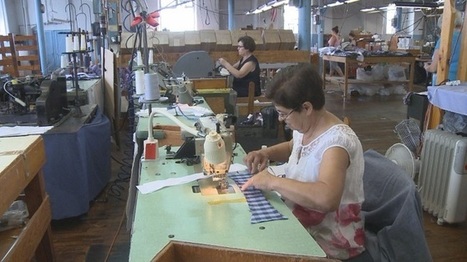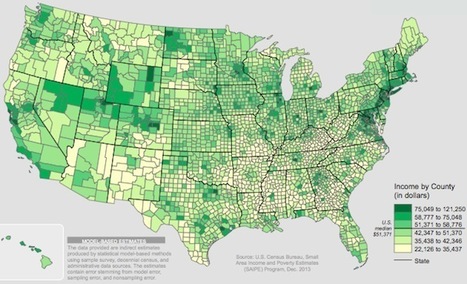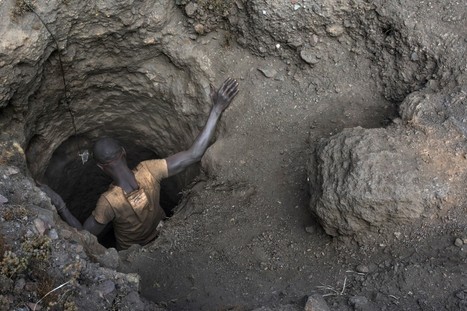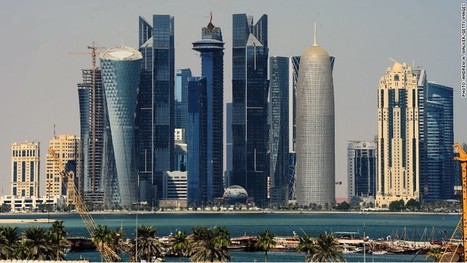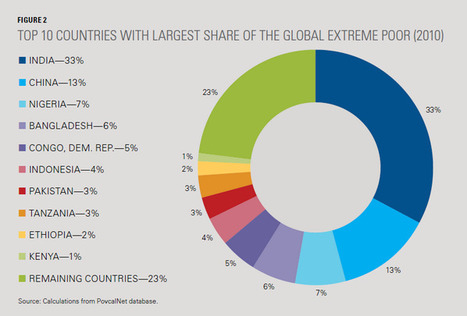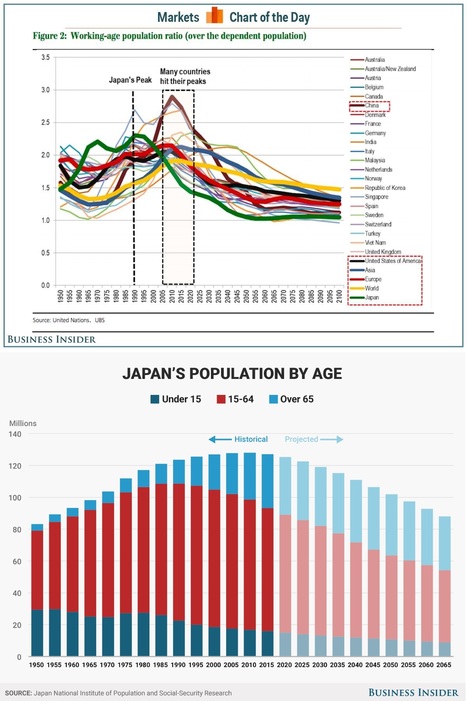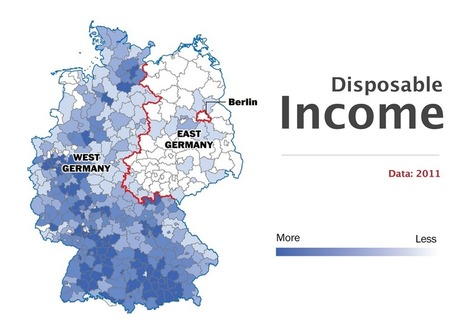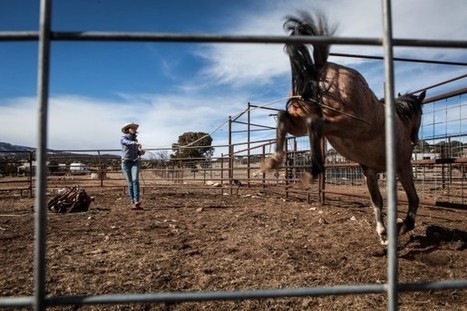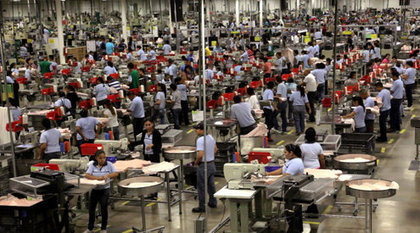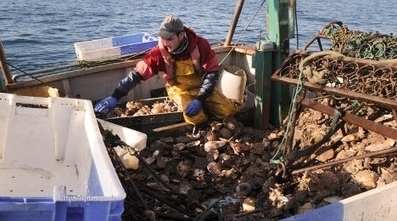"The Japanese don’t sleep. This is what everyone – the Japanese above all – say. I first encountered these intriguing attitudes to sleep during my first stay in Japan in the late 1980s. Daily life was hectic; people filled their schedules with work and leisure appointments, and had hardly any time to sleep.
Get Started for FREE
Sign up with Facebook Sign up with X
I don't have a Facebook or a X account
 Your new post is loading... Your new post is loading...
 Your new post is loading... Your new post is loading...
Matt Manish's curator insight,
January 18, 2018 7:48 PM
North Randall, Ohio was once home of the largest mall in America until it lost all of it's business to online shopping. Ironically, Amazon the online shopping website is looking to build a new warehouse in the old mall building that is now vacant. This would have a huge positive impact on the town's economy. The majority of citizens in North Randall are excited for Amazon's plans with this warehouse as it will create 2,000 jobs in the community. This is a big deal for North Randall since many of it's citizens lost their jobs at the previous mall. Overall, this is going to have a great impact on the North Randall community in a positive way and is a good example of economic geography.
tyrone perry's curator insight,
February 12, 2018 3:57 PM
When any business closes its bad for the company but worse for the employees. It leaves multiple people unemployed. But when a mall closes it is detrimental for the whole town/city and even at times the state. So when amazon says it is building a new warehouse that is going to be just as big the mall was where it once stood that is going to boost the surrounding economies and create much needed jobs. Amazon will big in revenue, jobs will create money and money will lead to spending which will also bing upgrades to the surrounding geographical areas!

GTANSW & ACT's curator insight,
December 18, 2016 12:00 AM
Influences on settlement patterns. Where is Australia's population concentrated? Syllabus
David G Tibbs's curator insight,
March 29, 2018 3:36 PM
We take the luxuries that we have for granite and forget where it comes from, or who pays the physical price for us to have them. One example is electronics and the Congo. The Congo is a country filled with Colbolt which is critical to lithium batteries which powers majority of products that are rechargeable. The price they pay is unsafe mining conditions, indecent wages, and environmental hazards to local communities. 60 percent of the cobalt used today comes from the Congo, and while some companies track it to make sure its "clean" some companies do not check its origins. In 2010 there was a push to add cobalt to a list of resources that come from the Congo to be from a militia free mine. Individual companies have started to be stricter about where they get their Cobalt it's still not mandatory under international law. However with the demand for cobalt is increasing due to more electric power styling for vehicles and other products. In order to meet these demands the cobalt will continue to come from abused people until companies or international law limits and outlines how to deal with the cobalt question. 2
Douglas Vance's curator insight,
April 21, 2018 2:10 PM
Given the absurd amount of minerals present in the country, the Democratic Republic of the Congo should be basking in immeasurable wealth. However, as shown by this inetractive and enormously in-depth piece by the Washington Post, the country constantly struggles with child labor, water pollution, and widespread dangerous working condition because of the global demand for minerals like cobalt and copper.
David Stiger's curator insight,
November 10, 2018 4:05 PM
The Congo, like Venezuela, is another example of a post-colonial country rich in valuable natural resources whose people, ironically, live in abject poverty. The Congo is a victim of its own geographical blessings as the industrialized world's bottomless need for Congo's cobalt, copper, and other minerals has put this former colony of Belgium on the map. The Congo reportedly supplies half of the world's cobalt. With few other options for mineral sources, lithium-ion battery manufacturers turn a blind eye as Congolese "diggers" endure inhumane, dangerous, and unfair conditions to produce cheap cobalt. Companies have not reacted to this injustice because of a desire to maximize their profits. With Western consumers acting as indirect accomplices, China leads the pack of this neo-colonial process of exploiting the Congo for its valuable underground minerals. The Chinese companies offer so little money for the cobalt that workers are forced to put up with hazardous conditions and unbelievably low pay for their labor.
The problem lacks an easy solution because it is highly complicated by the forces of globalization and geographical factors. Congolese diggers obtain the raw materials, who sell it to Asian middlemen, who then sell it to big Chinese manufacturers. These manufactures produce rechargeable batteries to sell to Western companies like Apple and Samsung. These products are then sold all over the world. The long supply chain makes it difficult for consumers to feel and see how their actions are impacting the lives of other people. The companies who should be held accountable justify their business decisions because there are not sources of cobalt to turn to. If there were other sources, companies like Huayou Cobalt could turn to other sources that treat their workers better, forcing Congolese suppliers to raise their labor standards. A short-term remedy, it seems, would be to classify Congolese-based cobalt as a conflict mineral. Western countries should fine and punish companies that are linked to the unjust cobalt trade, forcing these companies to raise their standards.

Olivia Campanella's curator insight,
September 5, 2018 3:31 PM
These seven major cities in this article are to be rich within the next 10 years. Bergen is the second most populated city in Norway and is already the forefront of Norway. While in Hwaseong it is home to the research facilities outside South Korea south of Seoul. And in Rhine Ruhr, Germany, it is already successful in urban areas. It is also the third largest city in Europe, trailing Paris and London.
BrianCaldwell7's curator insight,
March 16, 2016 3:24 PM
This is a hard read, but it is important to understand that there is a dark underbelly to many of the economic systems that are reshaping the world today. Sometimes we ask all the wrong questions, like "why is organic, local, or fair trade food so expensive?" We should really be asking why the other options are so cheap.
This, unfortunately is part of the answer. This is a 4-part series (I-camps, II-labor, III-Company Stores, IV-Child Labor) from the LA Times that has excellent pictures, videos, and interviews highlighting the working conditions of farm workers in Mexico. For an audio version, here is an NPR podcast interviewing Richard Marosi, the investigator behind the story.
Tags: food, economic, labor, globalization, food production, agribusiness, agriculture, unit 5 agriculture, indigenous.

Martin Kemp's curator insight,
December 17, 2015 3:12 PM
how do these people not know what the crop they are producing is or tastes like? that is amazing to me how you can be so oblivious to what you are doing. and how the place that produces cocoa does not actually have access to it.
BrianCaldwell7's curator insight,
April 5, 2016 8:15 AM
What is the geography of chocolate like? This video was produced in the Netherlands, the global center of the cocoa trade, but the world's leading producer of cocoa is Côte d'Ivoire. There is a dark side to chocolate production; the dirty secret is that slavery is commonplace on cocoa plantations in West Africa. Although the worst of the situation is glossed over in this video, it still hints at the vast economic inequalities that are part and parcel of the global chocolate trade and the plantation roots of the production. What are some of your reactions to this video? Tags: chocolate, Ivory Coast, Africa, poverty, development, economic, globalization, industry, labor.
Stevie-Rae Wood's curator insight,
December 9, 2018 4:30 PM
Chocolate is linked to modern day slavery in Africa. The cocoa bean is a billion dollar industry where westerners have the luxury of enjoying while the Ivory coast farmers have the sad fate of cultivating. Most farmers on the Ivory coast do not even know what the cocoa bean is made out of or what chocolate tastes like. Chocolate is a luxury on the Ivory coast because it is hardly available and very expensive. They simply are trying to make a living off of a highly consumed, taken for granted item in wealthy countries. We only see the pleasure behind the cocoa bean not the horrors it actually comes with.

dilaycock's curator insight,
May 5, 2014 8:52 PM
This information is taken from the World Bank's 2014 report "Prosperity for All." The report looks at "progress to date in reducing global poverty and discusses some of the challenges of reaching the interim target of reducing global poverty to 9 percent by 2020.... . It also reports on the goal of promoting shared prosperity, with a particular focus on describing various characteristics of the bottom 40 percent."
Sid McIntyre-DeLaMelena's curator insight,
May 29, 2014 12:48 PM
This graphic reveals the poorest populations and where they live and even though India and China are economic competitors on the global stage they still have the poorest communities. IN poor communities, the human place is changed by using less structurally sound architecture and disregarding cultural presence for functionality though holding true to cultural presence in individual lives. 
Amanda Morgan's curator insight,
September 18, 2014 11:49 AM
I agree with this article from the Guardian that development should be measured in human rights gains more than economic advancements. While globalization is taking place and allowing countries to trade and maximize profits, a large percent of people in the world are deprived basic human rights and are entirely forgotten about and not valued.
Lauren Quincy's curator insight,
March 19, 2015 4:50 PM
Unit 5: Agriculture, Food Production and Rural Land Use
This video is about how women make up the majority of the agricultural workforce and that giving them access to land, water, markets, and technology could increase food production by 30%. This in return would help boost the economy. Places such as Kenya have given women the same resources as men and have seen a 22% increase in crop production. In Brazil, programs targeting women in agriculture have helped cut the population in extreme poverty by half and malnutrition by 73%. This video encourages people around the world to help give women the resources they need in order to increase the food production and economy.
This relates to unit 5 because it deals with agriculture and particularly women's roles in agriculture. This video explains how increased resources can help end world hunger. Women are not given as much opportunity as men and this video expresses need to invest in women's rights.
mary jane james's curator insight,
January 12, 2017 8:11 PM
This article relates to my topics development and agriculture by showing how important it is that how equipping women with the right tool can make so much more food and how other countries should accept women and give them rights. Just like the video states women make up a majority of the world and countries need to take that advantage. Just like the video states women make up a majority of the world and countries need to take that advantage. Sooner or later the population will take over how much food we make, even with new technology we still might not make it fast enough or enough to support life on earth. The video states that we need to increase food production to 70% by 2050
In my opinion, this video really does touch base with how women are treated today in modern society and how they can become a really big impact on our food production if only they had the access to the same resources as men do. Then maybe we might have a chance to reach the goal what we need to in 2050. |

GTANSW & ACT's curator insight,
June 20, 2017 10:34 PM
Preliminary HSc - Global challenges: Population 
Deanna Wiist's curator insight,
September 12, 2017 9:01 PM
The article headline is quite click-baity, but there is some real substance to this article. The graphs are especially useful to teach concepts such as population momentum and the age-dependency ratio. These were the key parts of the article that caught my eye:
Tags: culture, gender, labor, population, migration, Japan, East Asia.

Corey Rogers's curator insight,
December 14, 2018 5:58 PM
Most of the time when you think of Mexico you hear poor and unsuccessful cities and countries. But that is not entirely true because Mexico City is a very successful Primate City and is one of the wealthiest places to be. People need to be more mindful and do more research before making assumptions.
Douglas Vance's curator insight,
February 9, 2018 3:00 PM
The social, political, and economic impacts of reunification are still being flt today. The old policies of both East and West Germany still impact the cultural and social habits of Germans. Despite the borders between the two former nations being eliminated almost 30 years ago, the differences between the two halves of Germany will be felt for decades to come. Issues from vaccines to child care to trash production all feel the effects of the policies of the former division.
tyrone perry's curator insight,
April 20, 2018 11:48 AM
From when this article was written it has been 26 years since Germany was completely unified. But over the last two years there has been a rift between east and west Germany. Economically the east feels left behind by the west with their rise of wealth. The west is mad that the east doesn’t taken in as many refugees as they do. These rifts between the two are not making things easy to work out between the two. All they are doing are pointing fingers and not coming up with solutions. Many people of the younger generations don’t feel as divided as the older generations do. They feel they are Germans and not east or west. Maybe they can find a way to bring people together as one.

Corey Rogers's curator insight,
December 15, 2018 1:00 AM
You may think that since the fall of the Berlin wall that Germany has reunified itself and has become a strong nation again but that isnt such the case. The fact is that most of West Berlin still feel left out and feel that they are still shorted in the reunification.

Alex Smiga's curator insight,
August 9, 2017 9:41 AM
If we know that furthering education and economic opportunities will help alleviate the problems present here, why aren't we as a planet seeing that they are implemented?
brielle blais's curator insight,
May 1, 2018 10:23 PM
Charcoal has become the unlikely hero of the informal economy of Africa. This is a positive for the economy. However, this is not a positive for the environment. Deforestation has become a large issue since the boom of more people using charcoal. This will speed up the issue of climate change. This post shows the negative and positives a product can have involving geography.

chao pan's curator insight,
June 15, 2017 6:50 PM
a good video to show how human activity negatively impacts the ecosystem. I will use this video in phase three
Chelsea Martines's curator insight,
September 10, 2015 9:35 PM
Americans have been said to be the least vacationing people compared to many other countries workers. But, according to the article, 40% choose to do this, and do not take off as many vacation days as they can. Many Americans would like to, but feel pressured to keep up with the American stereotype and keep being 'hard-working' citizens. BBC did a poll on their Facebook page to find this out, and many Americans said that their bosses as well do not make it easy to take time off sometimes, restricting their vacationing days, although at a federal level, they should be able to do so easily. 
Kevin Nguyen's curator insight,
September 16, 2015 1:07 PM
It is amazing to look at American society and their struggles with taking days out of work on vacation. In this competitive economy, people need to be hard working to keep their jobs and excel in their field of work. Taking days off usually would be wise in order to refresh and rejuvenate from the long working hours. However, people are fearing that their work load will be too overwhelming to take on upon their return if they chose to take time off. One of my managers at work (JCPenney) would stay passed her scheduled time to make sure the men's department would be clean and organized before she leave. She usually does this after she clocked out and will stay for 3-4 hours after. I can definitely relate this situation to the article. The fact that most Americans working at a job that they have tons of responsibilities for will feel stressed and overwhelmed if they take vacation days.
Tracy Harding's comment,
September 22, 2015 10:15 AM
You need to include global impact and personal thoughts.
Jessica Rieman's curator insight,
February 4, 2014 12:47 PM
The labor system keeps workers in Poverty. This is the argument that is transitioned by stating the fact that many factory workers are and will always remian in poverty if they have no oppurtunity to move up in the food chain and become educated in order to get themselves out of poverty. They need different skills in order to aquire a better job to create a better life. 
Edgar Manasseh Jr.'s curator insight,
February 11, 2015 11:33 PM
Its a very sad situation reading this. Seeing people go through all this to just survive. Kids don't even get any education and follow their parents footsteps to work at a plant just to be able to pay for bills. 8 dollars a day, and you wonder why they try to run to united states. Its very unfortunate that a lot of people go through this and i hope it changes soon, because to see that this is going on makes me thankful for what i have around me. Foreign investors are not great as they set out to be take advantage of the poor and get rich out of it, i think its pretty ridiculous. 
Matt Danielson's curator insight,
September 24, 2018 1:31 PM
This is a sad story of struggling in Mexican factories. These factories are a double sided blade. The plus is that these factories bring in jobs and relative safety to the communities( more jobs=less crime, also id imagine factories garner more protection provided by the state via police). The downside is the stagnant low wages and terrible living conditions. Though wages are better than they previously were they are not rising near the rate of other countries going through similar economic change. This reminds me of what the industrial revolution was like in the United States.

dilaycock's curator insight,
May 5, 2014 8:52 PM
This information is taken from the World Bank's 2014 report "Prosperity for All." The report looks at "progress to date in reducing global poverty and discusses some of the challenges of reaching the interim target of reducing global poverty to 9 percent by 2020.... . It also reports on the goal of promoting shared prosperity, with a particular focus on describing various characteristics of the bottom 40 percent."
Sid McIntyre-DeLaMelena's curator insight,
May 29, 2014 12:48 PM
This graphic reveals the poorest populations and where they live and even though India and China are economic competitors on the global stage they still have the poorest communities. IN poor communities, the human place is changed by using less structurally sound architecture and disregarding cultural presence for functionality though holding true to cultural presence in individual lives. 
Amanda Morgan's curator insight,
September 18, 2014 11:49 AM
I agree with this article from the Guardian that development should be measured in human rights gains more than economic advancements. While globalization is taking place and allowing countries to trade and maximize profits, a large percent of people in the world are deprived basic human rights and are entirely forgotten about and not valued.

Kristin Mandsager San Bento's curator insight,
January 22, 2015 7:03 PM
This makes absolutely no sense to me. How does the freshness of the scallop even last a trip like this? What is the transportation time back and forth?
BrianCaldwell7's curator insight,
March 16, 2016 3:40 PM
This type of nonsense only makes sense in a world where the bottom dollar is the only way to way to evaluate decisions. However, resource conservation (think of the food miles!), fair labor prices, and the preservation of local cultural economies are certainly issues that should be considered.
Tags: food, economic, labor, globalization, food production, agribusiness, agriculture. |








